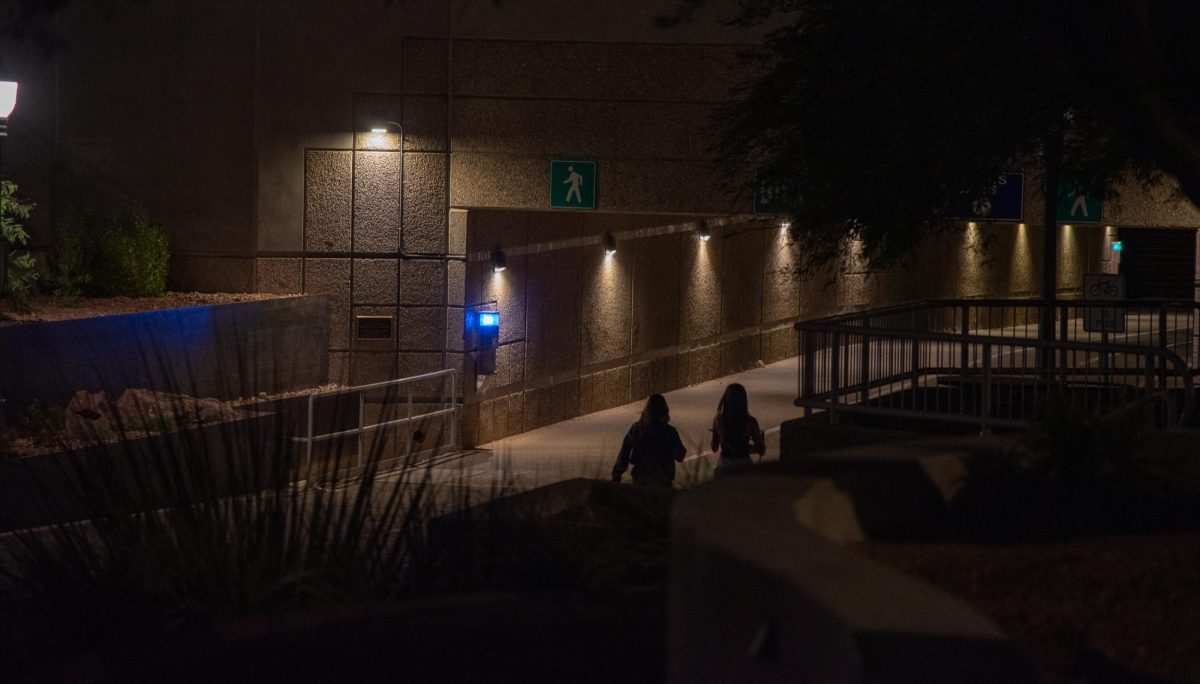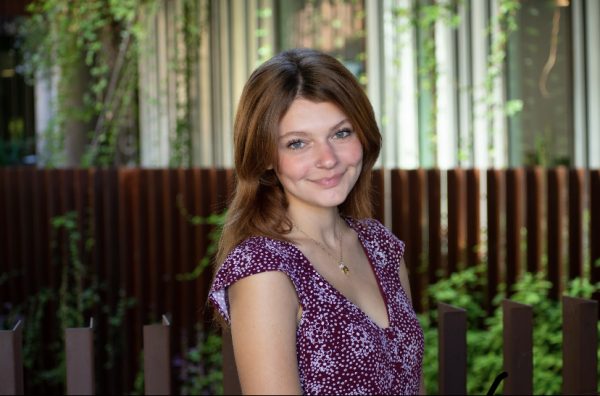Chief Safety Officer Steve Patterson and other public safety leaders hosted an hour-long walk on Oct. 25 called Safety Stroll with Steve through the main campus with parents and family members of current students at UA.
The University of Arizona encourages students, staff and faculty to educate themselves on the resources available through the Office of Public Safety as campus safety evolves.
In May 2023, several months following the fatal shooting of professor Thomas Meixner, the Office of Public Safety was developed. The office is now 18 months old and builds programs to update physical safety and awareness on campus.
Patterson spent almost 25 years as an FBI agent, retiring in 2022 to oversee UA campus safety and lead programs such as the Safety Stroll, which brings in employees from all across campus.
Members of Counseling and Psych Services, Office of Transportation, Office of Public Safety, the University of Arizona Police Department and Emergency Medical Services, led by Patterson, took the group to a classroom, a parking garage and through Old Main.
“I’m trying to look for new ways to reach out to our student population.,” Patterson told the Daily Wildcat. “This is a mechanism to do so.”

The team covered classroom safety procedures and resources, which included:
- Emergency procedure plaques near the door of every classroom, which list the address and room number in the event of an emergency
- Blue Call Boxes near the podium, which provide two-way communication to UAPD dispatch so that they can hear what is going on in the classroom; all centrally managed classrooms have these boxes and they are being added to departmentally managed classrooms
- Message boards and TV monitors which mimic UAlert notifications
- Emergency lock buttons to seal the room
During the stroll, Patterson also pointed out the Safety Map which can be used to locate the nearest medical gear if a person requires medical attention and provides:
- Stop the Bleed kits
- Automated External Defibrillators (AEDs) in the first-floor lobby of every major building
- Naloxone kits for opioid overdose reversal
If confronted with danger outside of the classroom, Patterson said to locate the nearest Blue Light Emergency Phone. Pressing the button flashes an emergency light and connects to UAPD dispatch through a landline to immediately locate the call. In a stalking situation, Patterson said that you can hit the button and keep running to the next Blue Light to leave a trail for the police.
These lights are inspected twice a year and 360 degree cameras are currently being added to the top of the lights. When standing near one, two others should always be in sight. They are also in the corner of every parking garage on every floor.
While many UA parking garages are well-lit, not all are. According to Patterson and the office of transportation members, poor lighting is being fixed across campus. They recommended parking near stairs and elevators, never walking distracted and investing in a cheap flashlight, as using your phone flashlight can hinder calling for emergency services.
The team also encouraged students to download available electronic resources, including the LiveSafe and SafeRide apps.
LiveSafe has a UAPD dispatch button, allows for anonymous police conversations and virtually tracks friends and family while walking home with the SafeWalk feature.
SafeRide is a free, university-funded and student-run driving program organized by the Associated Students of the University of Arizona. It is open from 7 p.m. to 12:30 a.m. on Tuesdays and Thursdays and 7-11 p.m. on Wednesdays and Fridays. Adriana Grijalva, ASUA president, attended the Safety Stroll and said she is working alongside her team to increase SafeRide hours.
A recent presence of gun violence and reported incidents has stirred discomfort among UA students and staff, but Patterson views things differently.
“I don’t necessarily see that campus is getting more dangerous,” Patterson said. “I think that we are being more transparent about the activities that are going on around campus.”
A common concern has been the UAlert response discrepancy during the Sept. 23 shooting this year. According to Patterson, this has been addressed by UAPD, and UA Police Chief Chris Olson signed a chief’s memo to ensure better response time.
“Changes have been made to ensure the UAlert process is faster,” Patterson said. “He’s [Olsen] going to be doing some awareness videos and we’re going to be providing a lot more details on that.”
Chief Retention Officer and Associate Vice Provost for Student Success and Retention Innovation Christine Salvesen, discussed efforts to enhance student safety and retention.
“What we don’t have control over is the fact that it [UA] is a public institution. Anyone can come on campus,” Salvesen said. “I would rather our students be prepared, even though it is a topic that is obviously not one we want to be dealing with.”
Salvesen is a member of the Campus Safety Commission. She encourages students to take training offered through the UA Threat Assessment Management Team, which offers targeted violence training sessions and an upcoming de-escalation training available in late fall.
“I started here as a freshman in 1990. So I’ve been here 34 years and I’ve seen a lot of administrative changes; I’ve seen a lot of culture shifts,” Salveson said. “There have been terrible things that have happened since 1990 […] It could happen on-campus, it could happen off-campus. And so what I have done is I have put myself through these trainings.”
One of the programs she and other UA staff have participated in is the Mandatory All-Employee Active Shooter Preparedness Training Program.
The next Safety Stroll with Steve is Nov. 12. They will pause in December and January for finals and resume in February.
Follow the Daily Wildcat on Instagram and Twitter/X.









